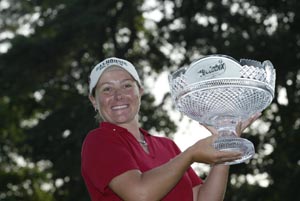Acushnet Sets Brand Records!
/Golfweek's Adam Schupak reports the heartwarming news, which I know will help me sleep better tonight.
For the 12 months ended Dec. 31, Fortune’s golf business – which includes the Titleist, Cobra, FootJoy and Pinnacle brands – generated net sales of $1.41 billion, up 7 percent from $1.31 billion in 2006. Operating income dipped slightly to $165.5 million compared with $166 million the previous year.Hmmm...attorney bills?
For the fourth quarter, Fairhaven, Mass.-based Acushnet reported a 12.6 gain in net sales to $245.1 million, up from $217.6 million in the same period of 2006. It posted an operating loss of $6.7 million; Acushnet had an operating loss of $4.8 million for the fourth quarter of 2006.
Acushnet does not provide specific financial details for each of its brands. However, Bruce Carbonari, president and chief executive officer of Fortune Brands, cited some of them in a news release about the year-end fiscal results.
Said Carbonari: “Successful innovations helped Titleist, FootJoy and Cobra achieve individual brand records, as we also attained sales records in every product category and in all major markets for the year.”
Golf ball sales increased at a high-single-digit rate, benefiting from a favorable product mix shift to the next generation Titleist Pro V1 and NXT families launched in 2007, said Craig Omtvedt, Fortune’s chief financial officer.
A favorable product mix shift...now that's a work of art.














